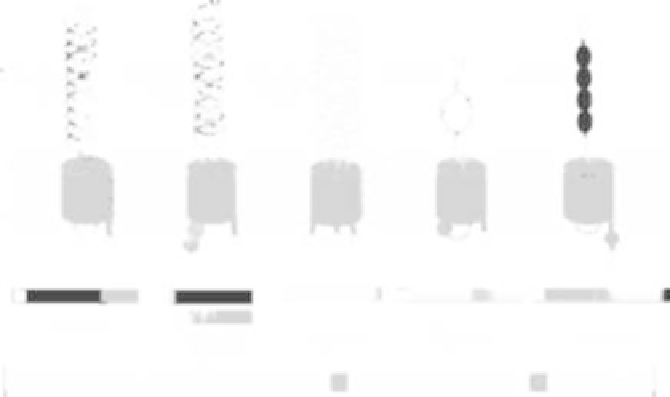Biology Reference
In-Depth Information
1993
). All of these phenotypes suggest that HlyA would be a potent virulence
factor in UPEC infections, however defining the actual role that HlyA may play
in pathogenicity has been elusive (
Linggood and Ingram, 1982; Mobley et al.,
1990; Yamamoto et al., 1995; Smith et al., 2006
). Recent studies however have
shown that HlyA, although not contributing to colonization, does play a major
role in evoking damage in the uroepithelium and in inducing hemorrhage in the
bladder during the early stages of
E. coli
-mediated cystitis in the mouse (
Smith
et al., 2008
).
THE TYPE 5 SECRETION SYSTEM
The T5SS is the simplest and most widespread protein secretion mechanism
in Gram-negative bacteria. The secretion system is currently divided into five
subclasses (types 5a to 5e) based on differences in gene organization and pro-
tein structure. Type 5a are better known as the classical autotransporters (ATs),
type 5b as the two-partner secretion pathway (TPS), and type 5c as the trimeric
autotransporter adhesins (TAA). Type 5d have only recently been described
(
Figure 16.3
). The 5e subclass has only been added to the T5SS family recently,
but includes the functionally well-characterized Intimin of
E. coli
and Invasin
of
Yersinia
.
FIGURE 16.3
Model of the type 5 secretion pathway. The system is divided into five different
pathways, the classical autotransporter (type 5a or ATs), the two-partner secretion (type 5b or TPS),
the trimeric autotransporter adhesin (type 5c or TAA) and the recently described type 5d and type
5e pathways. All proteins have an N-terminal signal sequence, a translocation β-barrel and a pas-
senger domain that is secreted to the surface. However they differ in gene number, organization and
barrel similarities.



Search WWH ::

Custom Search